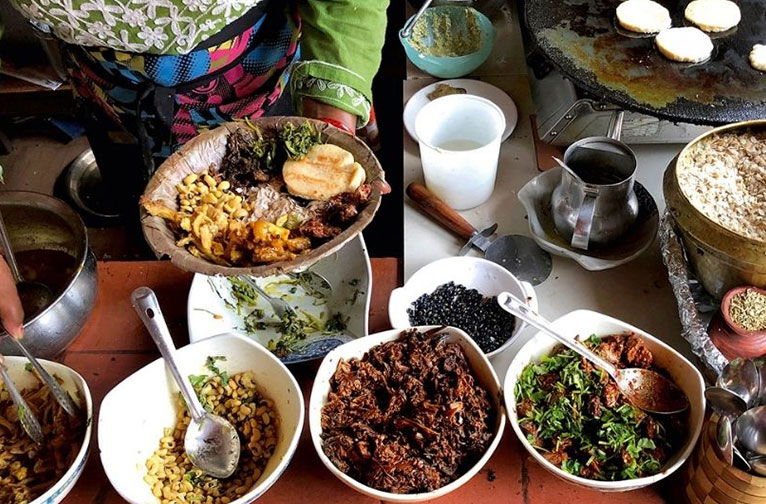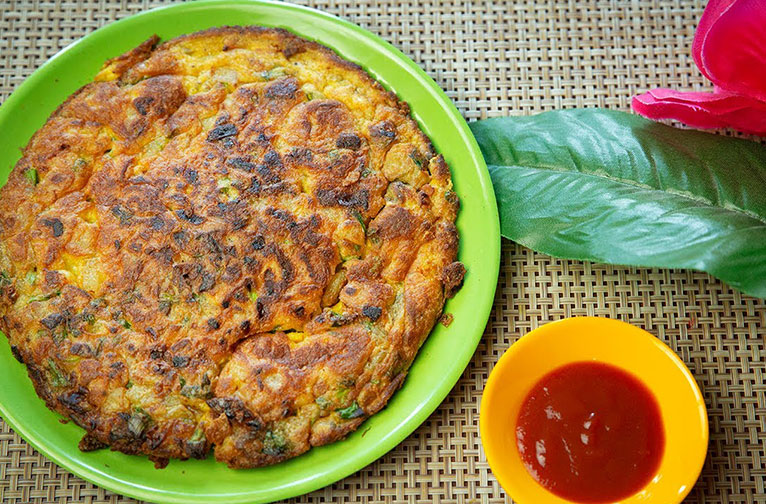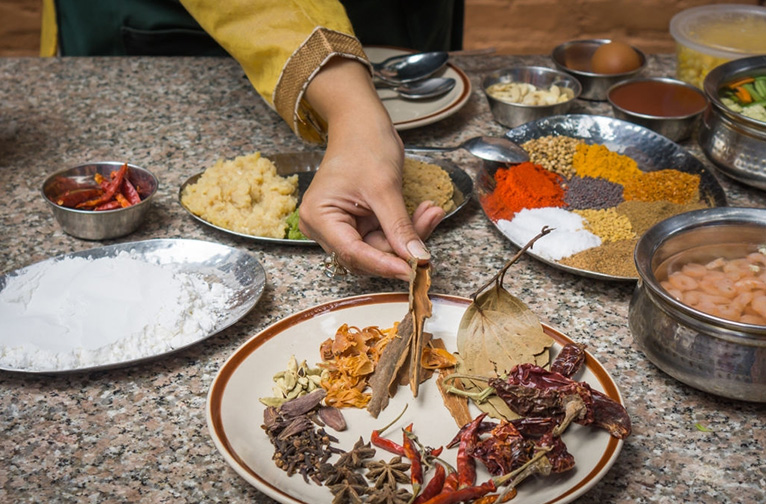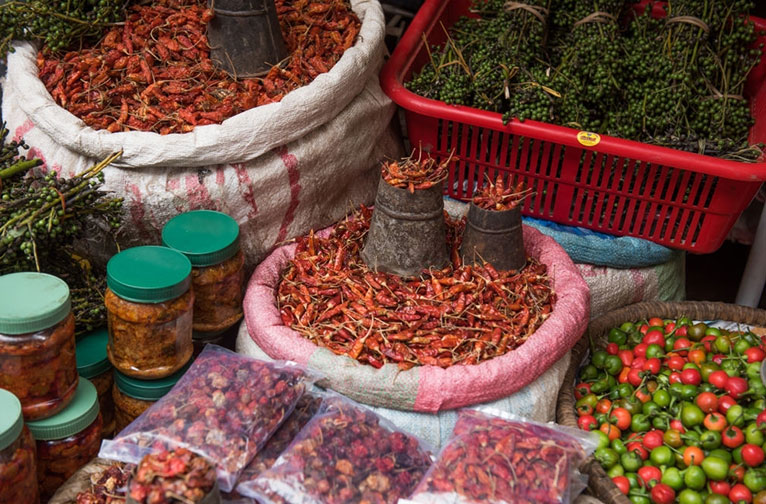Nepal’s culinary choices have been largely defined by its culture, ethnicity, and religion. Lauded for its nutritive value, the food stands out for its freshness. Two key traditional streams of Nepali cuisine are Newari (also known as Newa cuisine) and Thakali, which are readily available in the valley. The Newars were the original inhabitants of the Kathmandu Valley and are reputed for at least 200 dishes that are intrinsic to their culinary heritage.
The Newari table will typically feature rice flakes, spiced potatoes, pickles, soybeans cooked in a spicy sauce and sliced raw vegetables. As Newari food leans on the spicy side, yoghurt is served on the side to temper that fierce heat of the spices.


Newari cuisine makes use of all the parts of an animal, including tongue, spine, bone marrow and lungs. While spiced buffalo meat is a staple, lavish dishes are arranged from exotic meat parts for festive occasions. Nepal’s Newari style wedding feasts have long been a legend. Newari snacks are also hugely popular and available in the eateries in Kathmandu. Bara, for example, resembles a thick savoury rice-flour pancake. Eat it plain or with minced meat. Yomari, basically a steamed rice cake filled with molasses, nuts, and sesame seeds, is another popular item to be sampled. When you’re on a tour of Bhaktapur, you must sample the juju dhau; it’s the best place for this Newari king of yoghurt. A must-try, the pizza-look-alike chatamari is traditionally Newari in flavour and texture. It carries influences of the uttapam from Southern India, whose people would come here for pilgrimage.
Aila, a traditional Newari beverage, is created from a mix of fermented millet, rice, and grains. It’s a big hit at Newari festivals. Tongba, prepared from fermented millet, is the indigenous beverage of Nepal’s Limbu community.
Thakali Khana, popular in the uplands of Nepal, comprises rice/dhido, lentils, stir-fried greens, veg and non-veg curries, gundruk ko achaar and an assortment of pickles. Dhido is a thickened preparation of cooked millet/wheat/ maize/ buckwheat flour; it’s something like porridge or polenta but is topped with butter or ghee. You might even confuse it with dal- bhat, but the cooking method and ingredients are quite different. Dhido is very popular with the Sherpa community.
When you are visiting Pokhara and plan to participate in a home cooking demo of several popular Nepali staples, you should feel free to ask about dhido and how it’s made. Pokhara, we hear, is one of the best places to try Thakali cuisine!
The Terai region is one of the most fertile areas of Nepal. It is also home to the Tharu community, which is indigenous to the Chitwan region. While on a tour of this gorgeous region, it would be most interesting to learn more about their delicious dishes during the cooking demo in a village home. Dhikri, a dish made from rice flour, is one of the main delicacies of the Maghi festival. Apart from farming, they are also good fisherfolk and make mean fish curry.


Kathmandu now has restaurants where adventurous tourists can sample both Newari and Thakali specialities. That said — it’s fruitful to remember that even with ‘home cooking’, one may observe differences between the style of preparation, cooking and serving – cuisine from region to region, which can be pretty rewarding.